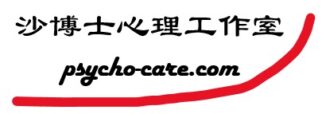机翻,未校对
在婴儿感知能力的研究中,使用了多种技术来确定婴儿对各种刺激的反应。因为他们不能用语言表达或填写问卷,自然观察的间接技术被用作确定婴儿可以看到、听到、感觉到什么等的主要手段。这些方法中的每一种都将婴儿在引入刺激之前的状态与其在刺激期间或之后的状态进行比较。两种测量之间的差异为研究人员提供了对刺激反应的水平和持续时间的指示。例如,如果某种均匀移动的模式穿过新生儿(新生儿)的视野,则会出现重复的眼球跟随运动。这些眼球运动的发生提供了证据表明新生儿在某种程度上感知到了运动模式。同样,婴儿一般运动活动水平的变化——转头、眨眼、哭泣等——已被研究人员用作婴儿感知能力的视觉指标。
然而,这样的技术具有局限性。首先,观察结果可能不可靠,因为两个或多个观察者可能不同意特定反应发生了,或者发生的程度不同。其次,反应难以量化。通常,婴儿的快速和分散的运动使得难以准确记录反应的数量。第三个也是最有效的限制是无法确定婴儿的反应是由于所呈现的刺激或从无刺激到有刺激的变化。婴儿可能对刺激的某些方面做出反应,这些方面与研究者所确定的不同。因此,当观察评估被用作研究婴儿感知能力的技术时,必须注意不要从数据中过度概括或依赖一两项研究作为婴儿特定感知能力的确凿证据。
观察评估技术已经变得更加复杂,减少了刚刚提出的限制。婴儿反应的电影分析、心脏和呼吸率监测器以及非营养性吸吮装置被用作了解婴儿感知的有效工具。电影分析使研究人员能够一遍又一遍地仔细研究婴儿的慢动作反应。可以精确测量两个刺激之间婴儿注意力的长度和频率。心脏和呼吸监测器为研究人员提供新刺激出现时的心跳或呼吸次数。数值增加被用作对新刺激感兴趣的可量化指标。 1969 年,研究人员首次将非营养性吸吮的增加用作评估措施。他们设计了一种将婴儿奶嘴连接到计数装置的装置。随着刺激的出现,婴儿吸吮行为的变化被记录下来。吸吮次数的增加被用作婴儿对给定视觉显示的注意力或偏好的指标。
另外两种研究婴儿感知的技术已经流行起来。第一种是习惯化-去习惯化技术,其中重复向婴儿呈现单一刺激,直到观察到的任何参与行为出现可测量的下降(习惯化)。此时会出现新的刺激,并记录反应能力的任何恢复(去习惯化)。如果婴儿未能解除习惯并继续表现出对新刺激的习惯,则假定婴儿无法将新刺激感知为不同。习惯化-去习惯化范式在婴儿听觉和嗅觉感知研究中得到了最广泛的应用。第二种技术依赖于诱发电位,这是一种大脑电反应,可能与特定刺激有关,因为它们起源于何处。大脑电模式的变化表明刺激正在进入婴儿的中枢神经系统并引发某种形式的反应。
上述每种技术都为研究人员提供了婴儿可以检测或区分刺激的证据。通过这些复杂的观察评估和电生理测量,我们知道只有几天的新生儿比以前怀疑的要敏锐得多。然而,这些措施只是婴儿感知能力的“间接”指标。
原文
Methods of Studying Infant Perception
In the study of perceptual abilities of infants, a number of techniques are used to determine infants’ responses to various stimuli. Because they cannot verbalize or fill out questionnaires, indirect techniques of naturalistic observation are used as the primary means of determining what infants can see, hear, feel, and so forth. Each of these methods compares an infant’s state prior to the introduction of a stimulus with its state during or immediately following the stimulus. The difference between the two measures provides the researcher with an indication of the level and duration of the response to the stimulus. For example, if a uniformly moving pattern of some sort is passed across the visual field of a neonate (newborn), repetitive following movements of the eye occur. The occurrence of these eye movements provides evidence that the moving pattern is perceived at some level by the newborn. Similarly, changes in the infant’s general level of motor activity — turning the head, blinking the eyes, crying, and so forth — have been used by researchers as visual indicators of the infant’s perceptual abilities.
Such techniques, however, have limitations. First, the observation may be unreliable in that two or more observers may not agree that the particular response occurred, or to what degree it occurred. Second, responses are difficult to quantify. Often the rapid and diffuse movements of the infant make it difficult to get an accurate record of the number of responses. The third, and most potent, limitation is that it is not possible to be certain that the infant’s response was due to the stimulus presented or to a change from no stimulus to a stimulus. The infant may be responding to aspects of the stimulus different than those identified by the investigator. Therefore, when observational assessment is used as a technique for studying infant perceptual abilities, care must be taken not to overgeneralize from the data or to rely on one or two studies as conclusive evidence of a particular perceptual ability of the infant.
Observational assessment techniques have become much more sophisticated, reducing the limitations just presented. Film analysis of the infant’s responses, heart and respiration rate monitors, and nonnutritive sucking devices are used as effective tools in understanding infant perception. Film analysis permits researchers to carefully study the infant’s responses over and over and in slow motion. Precise measurements can be made of the length and frequency of the infant’s attention between two stimuli. Heart and respiration monitors provide the investigator with the number of heartbeats or breaths taken when a new stimulus is presented. Numerical increases are used as quantifiable indicators of heightened interest in the new stimulus. Increases in nonnutritive sucking were first used as an assessment measure by researchers in 1969. They devised an apparatus that connected a baby’s pacifier on to a counting device. As stimuli were presented, changes in the infant’s sucking behavior were recorded. Increases in the number of sucks were used as an indicator of the infant’s attention to or preference for a given visual display.
Two additional techniques of studying infant perception have come into vogue. The first is the habituation-dishabituation technique, in which a single stimulus is presented repeatedly to the infant until there is a measurable decline (habituation) in whatever attending behavior is being observed. At that point a new stimulus is presented, and any recovery (dishabituation) in responsiveness is recorded. If the infant fails to dishabituate and continues to show habituation with the new stimulus, it is assumed that the baby is unable to perceive the new stimulus as different. The habituation-dishabituation paradigm has been used most extensively with studies of auditory and olfactory perception in infants. The second technique relies on evoked potentials, which are electrical brain responses that may be related to a particular stimulus because of where they originate. Changes in the electrical pattern of the brain indicate that the stimulus is getting through to the infant’s central nervous system and eliciting some form of response.
Each of the preceding techniques provides the researcher with evidence that the infant can detect or discriminate between stimuli. With these sophisticated observational assessment and electro physiological measures, we know that the neonate of only a few days is far more perceptive than previously suspected. However, these measures are only “indirect” indicators of the infant’s perceptual abilities.
来源 TOEFL TPO 13 R-03
